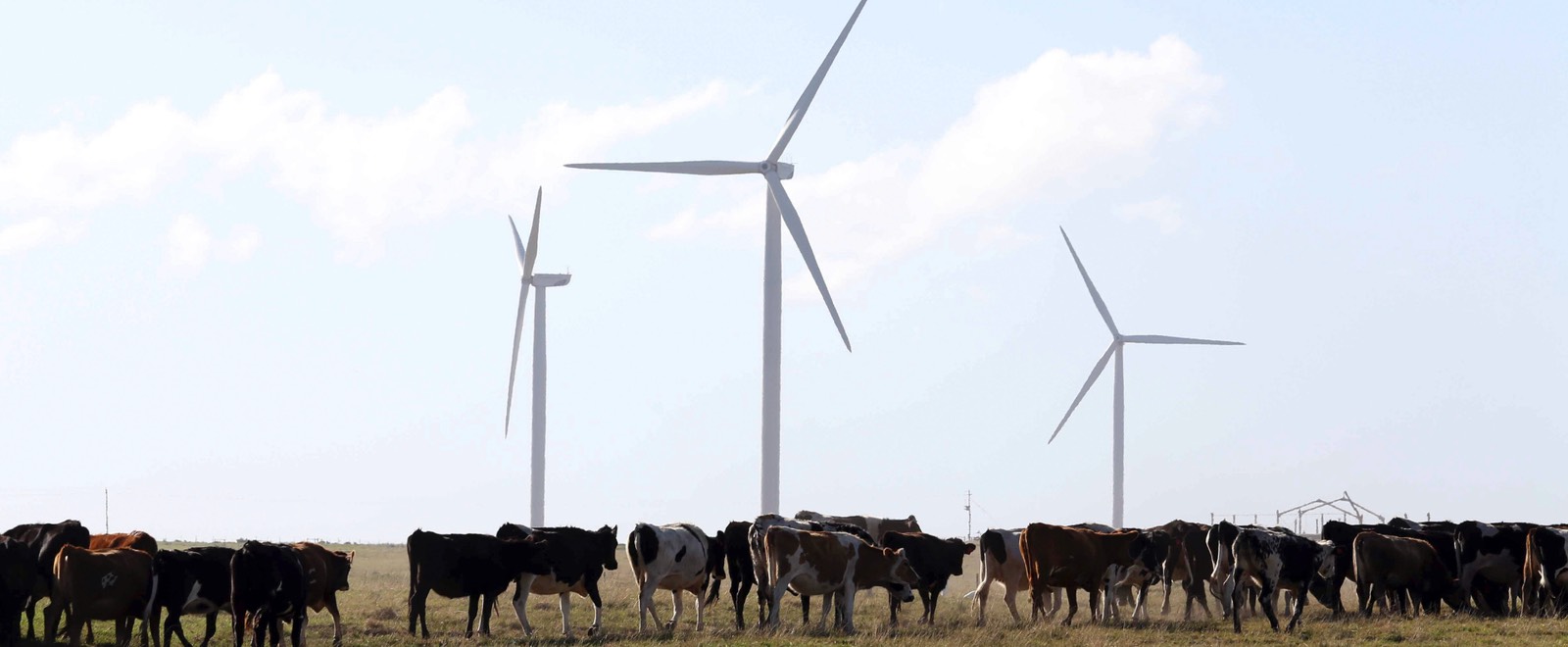Building SA’s Industrial Future: How the IDC is Forging the Path to a Low-Carbon Economy
Caption:
Wind energy is SA's next frontier for renewable
energy.
📷 ESA ALEXANDER
David Jarvis, the interim CEO of the Industrial Development Corporation (IDC), says the state-owned lender has ambitious plans that could contribute to SA’s next industrial revolution. The IDC is positioning itself as a key player in the country’s low-carbon transition, leveraging renewable energy sources and critical minerals to fuel this next phase — just as coal powered SA’s early industrial growth.
Global demand for critical minerals is expected to rise 500% by 2050, and the IDC aims to capitalise on this boom. The development financier has identified 17 critical minerals essential to the transition from fossil fuels to renewable energy systems including cobalt, platinum group metals, copper, lithium and rare earth elements. SA is well-positioned, with significant deposits of these critical minerals and the IDC’s strategy is to ensure they are extracted and processed domestically.
“The IDC has a strategic plan to develop regional value chains to beneficiate these minerals,” says Jarvis.
“Our goal is to enhance SA’s international competitiveness, much like cheap coal once powered our initial industrialisation.”
From Coal to Critical Minerals
The IDC’s focus on a low-carbon future is critical. In its 2023–2024 annual report, the corporation warns that failing to complete this transition could lead to further deindustrialisation, exacerbate unemployment and weaken SA’s exports.
Historically, the IDC has played an important role in SA’s industrialisation, a role it has played since World War II when disruptions in trade led to shortages of manufactured goods. Since its establishment in 1940, the IDC has helped transform the country from an agrarian and mining economy to the most industrialised nation in Africa. Yet, the manufacturing sector, which once contributed 25% of the economy, has shrunk to 12% as financial services have grown.
Now, with projects such as a battery-grade manganese processing plant and a natural graphite mine in Tanzania, the IDC is once again at the forefront of industrialisation. It is financing the Prieska copper and zinc mine in Northern Cape and the second lift at Phalaborwa Copper Mining, positioning it to take advantage of rising global prices for copper — an essential mineral in electric vehicle manufacturing.
The IDC’s commitment to a low-carbon transition aligns with global trends. BlackRock, the world’s largest asset manager, estimates that investment in energy infrastructure will reach $3.5 trillion per year this decade, with low-carbon investments making up 80% of energy spend by the 2040s.
Broader Economic Impact
Beyond the energy sector, the IDC is committed to diversifying SA’s economy by funding businesses across a range of industries, including agro-processing, automotive, chemicals and tradeable services such as tourism and filmmaking. For the current financial year, the IDC has allocated R6.7bn to the manufacturing sector alone.
Despite these initiatives, the IDC is navigating economic challenges. In the 2023/24 financial year, the IDC increased its net profit 25% to R7.4bn, but funding approvals dropped 16%. Currently, 26.3% of its loan portfolio is classified as non-performing and impairments stand at 36.4%.
Jarvis acknowledges the challenge posed by high non-performing loans and impairments to the IDC. “Although the IDC remains financially strong, we must address the high impairment and non-performing loan ratios,” he says. To tackle this, the IDC’s post-investment team is working with clients to develop value-creation plans aimed at growth and risk mitigation.
The IDC’s future outlook hinges on economic recovery, buoyed by recent positive developments. The South African Reserve Bank’s recent 25-basis-point interest rate cut has brought the prime lending rate down to 11.5%, providing much-needed relief for businesses and consumers alike. Additionally, Eskom’s suspension of load-shedding has reduced the cost of doing business, making SA a more attractive investment destination.
The Road Ahead
While these are promising signs, challenges remain. Infrastructure bottlenecks — particularly in the country’s road, rail and port networks — continue to hinder economic growth. Luvo Tyandela, the managing director of Mianzo Asset Management, argues that SA’s inadequate infrastructure poses a risk to its low-carbon ambitions and industrial diversification strategy.
“Public infrastructure is crucial to creating an environment conducive to investment,” Tyandela says. Jarvis echoes Tyandela’s sentiment. “The IDC is working to support government in addressing infrastructure bottlenecks in the economy that hinder economic development. These include support for energy, transport and water infrastructure.”


